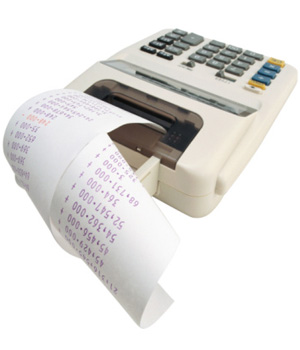
By Robert B. Teuber, Weiss Berzowski Brady LLP, Milwaukee
When dealing with the IRS, an audit is often only the first step in the process. In the last edition of InsideTrack, the article on tax audits ended with a reference to the report that the IRS will issue when an auditor determines that additional tax is due. The report will be what is known as either a “30 -day letter” or a “90-day letter.”
These cleverly titled letters received their names by reference to the amount of time a client has to respond to the letter to preserve their appeal rights. Choosing which letter to respond to will establish a distinct procedural posture in a case. An objection to either, however, will give a client the opportunity to be heard by the IRS’s administrative appeals division.
Tax attorney Rob Teuber talks about IRS audits, and the steps that lawyers should take to help their clients navigate the process. From the initial letter to the actual audit, Teuber gives sound advice for minimizing the stress associated with such an event.
A 30-day letter can be considered a preliminary report outlining the auditor’s proposed adjustments to a tax return and the reasons therefor. Even though “preliminary” in some sense, a client can file a written “protest” objecting to the assertions in the 30-day letter and outlining the items to which they object and the reasons therefor.
By filing the protest, the taxpayer preserves the right to have the case transferred to the IRS Appeals Division for consideration. However, the auditor can retain the case file for further adjustments which may eliminate the need for an appeal.
A 90-day letter, formally known as a Statutory Notice of Deficiency, is an official assertion under the provisions of the Internal Revenue Code that a tax deficiency exists. To object to the findings in a 90-day letter, a “petition” must be filed with the United States Tax Court.
It is essential that a petition objecting to the 90-day letter be filed with the Tax Court before the expiration of ninety calendar days. The rule is not ninety business days. The rule is not ninety days if you can make it within ninety days. If a petition is not filed with the Tax Court within the ninety day period, the Tax Court will not have jurisdiction to hear the case. No extensions.
Filing the petition results in the case being placed on the Tax Court docket, an “answer” by the government and a transfer of the case to the IRS Appeals Division (unless previously considered as discussed below). If a resolution is found in the Appeals Division, the case will not need to proceed to trial.
Typically an IRS auditor will first issue a 30-day letter allowing the opportunity to protest and have a case heard in appeals without the need to implicate a Tax Court proceeding. If a 30 Day letter is ignored, or bypassed by agreement, the IRS auditor will issue the formal 90-day letter and the Tax Court path can be taken. The route a client may choose to pursue can be a question of strategy or may just be a matter of personal preference.

Once the 30 or 90-day letter is objected to, the case will find its way into the appeals division for consideration by an appeals officer. While part of the structure of the IRS, appeals prides itself on its independence and neutral consideration of cases. Their role is to resolve cases.
As did the auditor, the appeals officer will apply the applicable law to the facts of a particular case and will reach certain conclusions with respect thereto. However, appeals has authority to weigh the relative merits of the respective legal arguments and can settle cases based on the risk that the IRS would lose in court. Stated another way, an appeals officer can settle a case based on the hazards of litigation. For this reason alone, an audit with findings subject to reasonable objection is often worth appealing. Significantly, however, appeals will not settle a case simply on a nuisance basis.
When a 30-day letter case is settled in appeals the resolution will be documented by written agreement. The process is different where a 90-day letter was appealed. Because the petition used to object to a 90-day letter starts a Tax Court case, the settled case must be resolved by decision documents prepared by IRS counsel and filed with the court.
If no resolution is reached with the appeals division, the next option will be to proceed towards a Tax Court trial. If a 90-day letter was appealed, the client is already on this route.
However, if a 30-day letter was challenged without resolution in appeals, the IRS will issue a 90 Day Letter. If this 90-day Letter is challenged in a petition to the Tax Court, the case will proceed directly towards trial because it has already undergone consideration by Appeals. That is, there is only one shot in appeals following an audit. That opportunity will come after either letter, but not after both.
About the Author
Robert B. Teuber is a tax attorney with Weiss Berzowski Brady LLP in Milwaukee. He works with individuals and businesses in resolving tax audits, appeals, litigation and collection actions brought by the IRS and Department of Revenue. Rob can be reached at (414) 270-2538 or at rbt@wbb-law.com.
Related:
